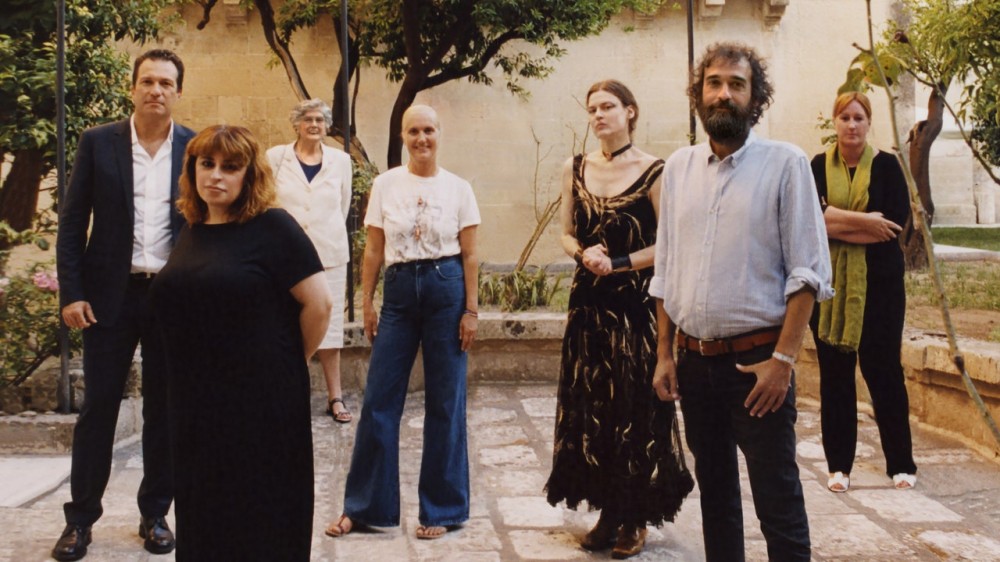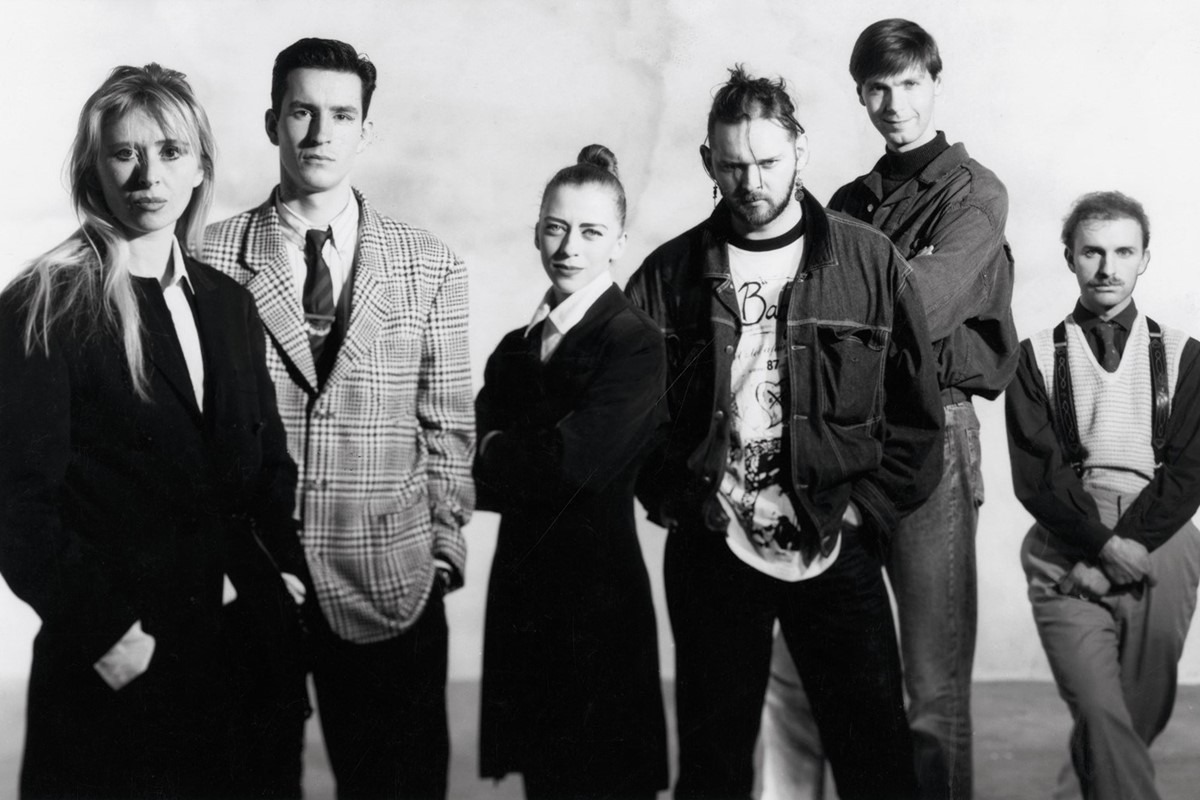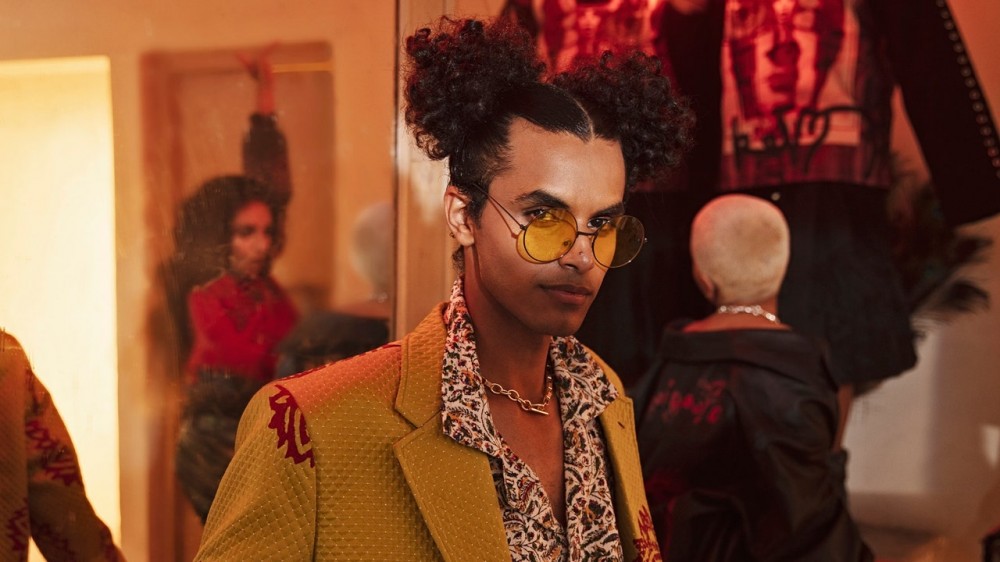
Community, Craft, Collaboration: How Maria Grazia Chiuri Engaged the Town of Lecce for Dior Resort
MAGIC HAPPENS every evening in Lecce, a beautiful limestone city in Puglia, Italy’s stiletto heel. The spell is cast shortly before dusk, when the city seems to glow as swallows dart and sing in the darkening sky. Yet tonight, from my position on a rooftop overlooking the Piazza del Duomo, a new magic—a kind of human alchemy—is afoot in Lecce. In the square below, Dior is holding its cruise 2021 show. This marks both a significant departure—the house has never before shown in Italy—and a significant homecoming: Antonio, the father of Dior’s creative director, Maria Grazia Chiuri, was born right here in Puglia. “For me,” she says, “to be here is to come back to my memories of the summers I spent here when I was young. I still spend a lot of time here and have a family house here, but I had never reflected on how the culture of this land influences me and how I work in fashion.”
How Chiuri works in fashion, in fact, is what has brought her home to further her transformative journey for Dior. Ever since her appointment in 2016 as the first female designer of this legendary Paris womenswear maison, she has worked to widen its aperture—and to make the brand relevant to a greater audience than ever before—by welcoming a progressive and inclusive cast of collaborators to help shape her authorship. we should all be feminists was her opening statement in 2016—via Chimamanda Ngozi Adichie—emblazoned across T-shirts on the runway. Further voices contributing to Chiuri’s chorales have included those of legendary art historian Linda Nochlin (why have there been no great women artists? on another T-shirt) and artist Judy Chicago (who created a towering installation for Dior’s spring 2020 haute couture show). She has also welcomed contributions from the Chanakya School of Craft in Mumbai to realize the set for that same Chicago-inspired couture show, and both Grace Wales Bonner and the artist Mickalene Thomas designed Bar jackets for last year’s sensational cruise show in Marrakech. (This exploration of intersections between African and European traditions also included collaborations with Pathé Ouédraogo and Uniwax.)
Through this urge to share her creative process with a seasonally shifting collective of artisans, artists, and feminists, Chiuri has changed the wider perception of Dior. Once an exquisite but undeniably haughty exemplar of French couture tradition, Dior has been remade as a still-exquisite yet newly inclusive and global-facing label that connects with women not merely via womenswear but by its sincere engagement with issues fundamental to modern femininity, from championing labor rights to highlighting the need for respect and visibility for all women. “Loudly and proudly declaring my and the maison’s wish to step away from the stereotype of women by integrating feminist ideas is a way to keep Dior’s heritage relevant,” Chiuri said recently. “I’m striking a balance between an iconic past and the need to be anchored to the present.”
Currently, Chiuri’s magic formula is bewitching thanks to a freshly mixed potion of collaboratively sourced ingredients in tonight’s show. The piazza is walled by festive Italian luminarie, traditional trellises of colored bulbs conceived by multidisciplinary artist Marinella Senatore that feature statements such as “I’m going to make everything around me beautiful.” (The words, says Senatore, “illuminate an idea that beauty is also connected to social change.”) The haunting, urgent score, played by a largely local orchestra, was composed by Paolo Buonvino, a man whom Chiuri hails as her partner in the collection’s creation. Buonvino’s music informs the impassioned and emotional movement, from subjugated to emancipated, of a group of female dancers in the traditional folk style pizzica, who have been choreographed, alongside their male counterparts, by the fearsomely inventive Jerusalem-born choreographer Sharon Eyal.
As the models emerge, confidently circling the bandstand and negotiating the dancers who whirl around them, they reveal a collection that articulates the distinctly Parisian fashion language of Christian Dior in a powerfully direct and inarguably Puglian dialect. The house-signature Bar jacket has been loosened in proportion, then fabricated in jute or fabrics woven by Le Costantine Foundation, which is dedicated to passing down local artisanal techniques while providing employment for women. Its motto, Amando e Cantando (“Loving and Singing”), is woven upon some of the pieces. Other details sing to the eye, too: Floral illustrations—some embroidered, some in jacquard—are part of a 250-strong portfolio of images drawn by Chiuri’s long-standing collaborator the artist Pietro Ruffo, while striking lace embroideries of butterflies and more florals are contributed by Marilena Sparasci, a holder of the flame of the traditional artisanal technique of tombolo, or bobbin lace. Alongside the headscarves, beaten-leather corsetry, and atelier-embroidered wheat sheaves that decorate some of the collection’s dresses—include the one worn backstage by Eyal—the disparate elements combine to create something strong, intensely feminine, and eminently Chiurian.
When we talk the following day, the designer will call this her “community collection,” even if one key element of that community—the audience—is missing from this show. Still, in the ancient seminary that acts as a kind of backstage, the intellectual electricity of close creative contact is tangible. As they gather (at the state-recommended distance) for Vogue’s portrait, most of these collaborators are meeting for the first time. Tombolo expert Sparasci, 75, recounts with vigor how Chiuri’s first visit last November to her rural workshop and archive has culminated in “this beautiful evolution that is true to the old culture.” Ruffo observes, “The strength of Maria Grazia is that she has been the conductor of an orchestra whose members were all obliged to play in isolation—and it is incredible to see the result.” Fresh from makeup, Maria Cristina Rizzo of Le Costantine Foundation explains how Chiuri came and connected immediately with their mission to pass on traditional weaving techniques to a group of 20 students on a biodynamic property close to town. “This is very important for us,” Rizzo says, “because the foundation is a small concern—there are only 1,000 people in our town—and now the world will see our work.”
The sun is high the next afternoon when I meet Chiuri in a garden nearby. She laughs with gusto at the suggestion that perhaps only a strega—a witch—could have cast last night’s many-faceted creative spell, and when I relate Pietro Ruffo’s description of her as conductor of a distanced orchestra, she exclaims, “Yes, that’s right! It was very strange to do it this way, but we were determined to carry on. Here in Italy, we have tourism and fashion. If we have to stop both because of the coronavirus, then the only thing we can do is go and plant potatoes. We all cried backstage after the show. There was this powerful feeling that you need to share your dreams—and that you need to create to be close to other people.”
The show, she explains, was designed to draw attention to Puglian artisans’ expertise for both its beauty and its potential to empower women. Chiuri leans forward to explain. “Over my last four years in France, I’ve seen that they understand that craft represents culture, but I think in Italy we are less conscious about the value of this kind of craftsmanship. So I wanted not only to show what is possible to do with these skills worldwide but also to show that the people here have a different relationship with these skills—not just here but in many places around the world, these kinds of jobs are normally done by women at home. They are considered ‘women’s work,’ and people don’t recognize that this work can bring real opportunity in life.”
And although the Lecce location is exceptional both for Dior and Chiuri, she readily concedes that this collection’s wide array of collaborators and cocreators is not: “I love to work with other artists,” she says, “because you learn a lot—you learn to think in different ways. I find it very boring to work alone.”



